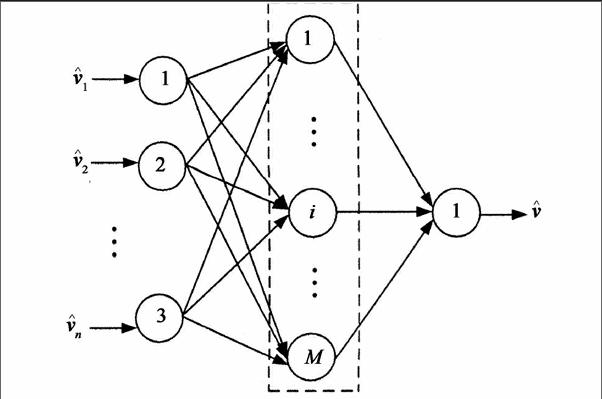基于区域信息融合的风电场平均年发电量预测
王娜等



摘要:备选风电场在寿命周期内的平均年发电量是风电场宏观选址的一个重要参考判据.为了提高风电场平均年发电量的预测精度,提出了一种基于风电场附近多个气象站长期测风数据的区域信息融合的平均年发电量预测方法.首先分别建立各气象站与风电场同期小时风速之间的相关模型,应用相关模型得到多个长期小时风速预测值,再用神经网络对长期小时风速预测值进行融合处理得出最终的小时风速预测值,在此基础上进行风电场平均年发电量的估算.仿真结果表明:本文提出的区域信息融合方法对年平均发电量的预测误差比采用单一气象站数据的预测误差最高可降低11.32%.
关键词:平均年发电量;测量相关预测;信息融合;神经网络
中图分类号:TM315 文献标识码:A
Average Annual Energy Output Prediction Based
on Regional Information Fusion
WANG Na1, SHAO Xia1,GAO Yunpeng1,WAN Quan2
(1.College of Electrical and Information Engineering, Hunan Univ, Changsha,Hunan410082 China;
2.State Grid Hunan Electric Power Company Research Institute, Changsha,Hunan410007,China)
Abstract:Annual energy output of a candidate site in its life span is an important reference criterion of wind farm macro siting. A regional information fusion method, which allows the use of multiple reference wheather stations with a long history of wind speed and wind direction measurements, was proposed to improve the annual energy output prediction accuracy. Firstly, the correlation model was established between the shortterm wind data of a single reference wheather station and the candidate wind farm, and the multiple longterm wind speeds of candidate site based on different reference stations were predicted by using the model. Then, the multiple prediction results were integrated by neural network to obtain the final longterm hourly wind speed data, and the annual energy output was subsequently determined on the basis of the knowledge of these wind speeds. The simulation results show that, by using the proposed method, the error reduction up to 11.32% has been achieved in the relative error of the average annual power output, with respect to the case of using a single reference wheather station method.
Key words: average annual energy output; measurementcorrelatepredict(MCP); information fusion; neural network
风能资源评估是风电场选址的关键,其中备选风电场在整个寿命周期内的平均年发电量是一个重要的参考判据.风电场的寿命周期通常为20~25年,在此期间平均年发电量的估算受风速变化(日变化、季节变化、年际变化)影响较大,要准确地进行评估至少需要数年甚至数十年的风速观测数据,这样才能减少由于风速变化带来的不确定性[1].但是,在实际工程的规划阶段不可能用如此长的时间来收集现场数据.在缺乏备选风电场长期可靠风速记录的情况下,广泛采用测量-相关-预测算法(MCP,MeasureCorrelatePredict)来进行风资源评估,即在备选风电场址处设立测风塔进行1~2年观测,利用这个短期观测数据和风电场附近气象站20~30年的历史观测数据进行评估.
目前MCP算法主要有线性回归法[2-4]、方差比法[2]、Weibull尺度法[3]、概率函数法[5]、神经网络法[1,6]和Bayesian网络法[7]等.其中线性回归法、方差比法、Weibull尺度法、概率函数法均是利用风电场附近单一气象站的信息进行预测.实际上风电场附近可能存在多个与风电场距离较近且风速相关性较强的气象站,在这种情况下只采用一个气象站的信息势必会影响预测的精度.为了进一步提高预测精度,本文提出了基于多气象站信息即区域信息融合的平均年发电量预测算法.该算法由3部分构成,首先分别建立各参考气象站与风电场同期小时风速之间的相关模型,应用相关模型得到多个长期小时风速预测值;然后用神经网络对长期小时风速预测值进行融合处理得出最终的预测值;最后,在长期小时风速的基础上进行风电场平均年发电量的估算.与文献[1]和[7]相比,算法更加灵活,并且可以运用目前成熟的MCP算法,对年平均发电量的预测误差相比采用单一气象站数据预测方法最高可降低11.32%.

